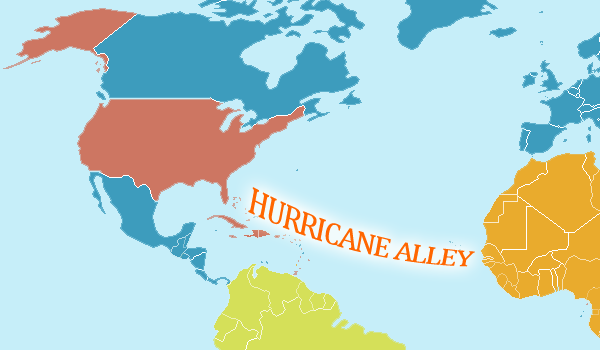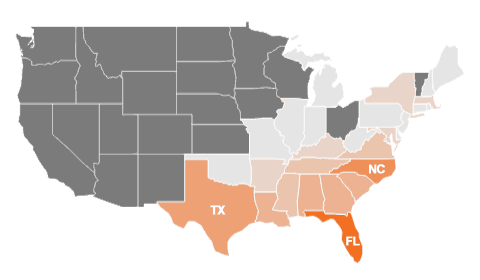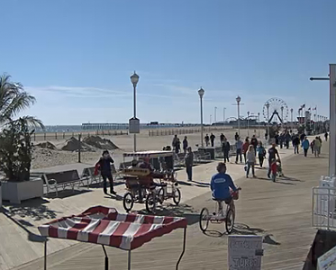Hurricane Records, Numbers & Facts
1.
When does Hurricane Season Peak in the United States?
Although hurricane season officially begins June 1st, the most active time of the year is mid-August through late October. Historically, September 10 is considered the peak day to find a tropical storm somewhere in the Atlantic Ocean.
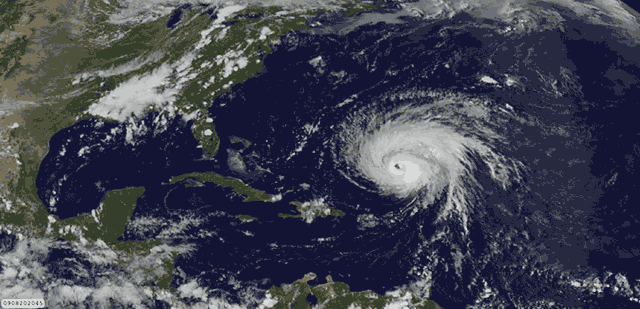
Image Credit: source.colostate.edu
2.
Why are Hurricanes classified in 5 categories?
Hurricanes are measured, in terms of power, in two ways: wind and pressure. The Saffir-Simpson Hurricane Wind Scale is a 1 to 5 rating based on a hurricane’s current sustained wind speed. This scale estimates potential property damage, coastal flooding caused by storm surge, and the potential loss of life.
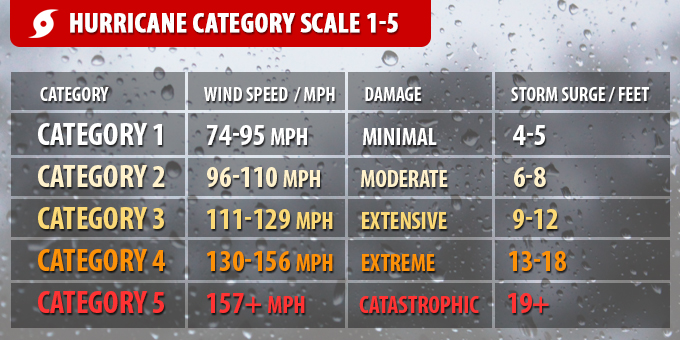
To be classified as a hurricane, a tropical storm or cyclone must have one-minute maximum sustained winds of at least 74 mph (Category 1). Hurricanes reaching Category 3 and higher are considered major hurricanes because of the potential to cause damage.
Source: nhc.noaa.gov
3.
Which states are most likely to be hit by a Hurricane?
#1 FLORIDA
Because of its large size (over 1300 miles of coastline), Florida is often on high alert during hurricane season. 40% of the hurricanes that make landfall in the United States hit Florida.
#2 NORTH CAROLINA
North Carolina’s Outer Banks is a chain of barrier islands that stretches nearly 200 miles off the coast of North Carolina and into Virginia. These fragile islands can feel the impact of tropical storms and hurricanes that reach the U.S coastline.
#3 TEXAS
In August and September, the warm sea surface temperatures in the Gulf of Mexico can quickly intensity a tropical storm, which can rapidly strengthen in just a few short hours.
4.
Retired Hurricane Names
Names can be permanently “retired” if a hurricane causes widespread damage. In 2018, Hurricane Florence and Michael were officially retired. Other retired names include Katrina, Andrew, Sandy.
Complete list of all retired Hurricane names since 1954
5.
How Big Can a Hurricane Get?
Typical hurricanes average 300 miles wide although this can vary considerably. According to the National Hurricane Center, Hurricane Sandy in 2012, is officially listed as the largest hurricane to have formed in the Atlantic. It reached 900 miles in diameter.
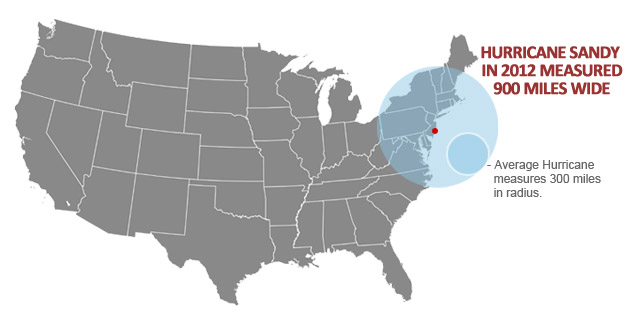
6.
The Power of a Hurricane
A typical hurricane releases approximately 600 trillion watts of heat energy, that’s equivalent to 200 times the world’s total electrical generating capacity. Still that’s nothing compared to Jupiter’s Great Red Spot, a massive hurricane (anticyclonic storm) nearly twice the size of Earth. The winds from this storm peak 275 mile per hour, and the storm is believed to have existed for 350 years.
Source: pbs.org
7.
Record for the most hurricanes active simultaneously
The record for the most hurricanes active simultaneously is four. This has occurred twice, 1893 and 1998. By good luck, three of those hurricanes (Ivan, Jeanne and Karl) in ’98 remained away from land and well out to sea. But the fourth, Hurricane Georges was a Category 4 hurricane which caused severe destruction in the Caribbean. In 1971, there were 5 tropical cyclones simultaneously, but only 2 became hurricanes.
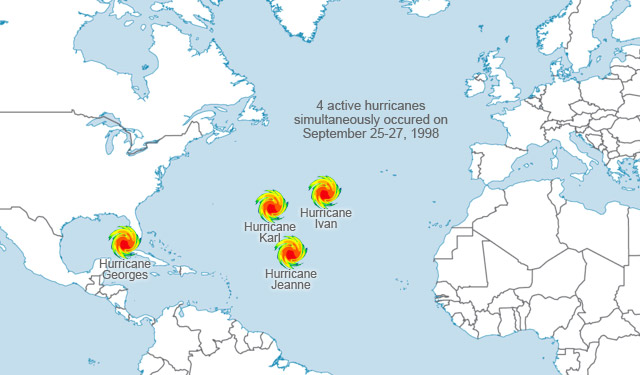
8.
highest sustained wind speeds ever recorded
5 Hurricanes in the Atlantic reached sustained wind strengths of 185 mph. Hurricane Gilbert, Irma, Wilma,and Florida Keys hurricane in 1935 reached max winds of 185 mph, while Hurricane Gilbert peaked at 190 mph. However, they are not the most powerful of all time. When it comes to max wind speed, Hurricane Patricia in 2015, peaked with winds at 215 mph in the Eastern Pacific Ocean.
Source: businessinsider.com
Year |
Atlantic Hurricane |
Peak Wind Speed |
|---|---|---|
| 1980 | Hurricane Allen | 190 mph |
| 1935 | Florida Keys Hurricane | 185 mph |
| 1988 | Hurricane Gilbert | 185 mph |
| 2005 | Hurricane Wilma | 185 mph |
| 2017 | Hurricane Irma | 185 mph |
9.
Most active hurricane season ever
On average, 10 named storms occur each year, with an average of 6 becoming hurricanes and 2-3 becoming major hurricanes (category 3 or greater). The most active hurricane season on record was 2005, during which 28 tropical storms formed, and a record 15 became hurricanes. The 2017 Atlantic hurricane season was also an extraordinary active and catastrophic hurricane season with 17 named storms, 10 hurricanes, and 6 major hurricanes.
Source: wikipedia.org
Rank |
Year |
Storms |
Hurricanes |
Major Hurricanes |
|---|---|---|---|---|
| #1 | 2005 | 28 | 15 | 7 |
| #2 | 1933 | 21 | 10 | 5 |
| #5 | 2010 | 19 | 10 | 5 |
| #4 | 2011 | 19 | 7 | 4 |
| #5 | 2012 | 19 | 10 | 2 |
10.
Hurricane Alley
Hurricane Alley refers to a wide area of warm water stretching from the coast of Africa to Central America including the Gulf Coast. This region is often the birthplace of hurricanes and tropical storms during the Atlantic hurricane season. The sea surface temperature of the Atlantic in Hurricane Alley has grown warmer over the past few decades, which has led climate scientists to study the correlation between warmer sea surface temperatures and increased hurricane activity.
Source: wikipedia.org
